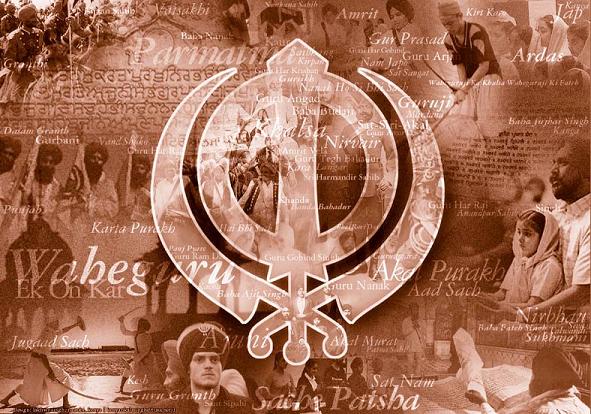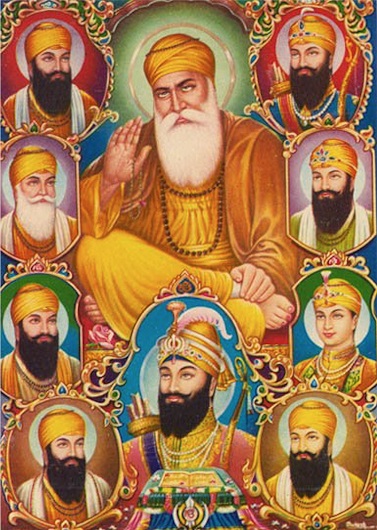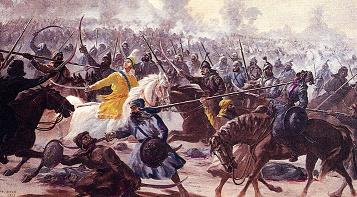Martyrdom of Ajit Singh, Jujhar Singh
Sawa lakh se ek laraoon
Tabe Gobind Singh Nam Kahaoon Truth is stronger than a gun.
Millions can be defeated by one.
With the objective of killing or capturing Guru Gobind Singh, the joint forces of the emperor of Delhi and the rajas of Himachal Pardesh attacked Anandpur Sahib. They encircled the town, and did not allow any food to be taken inside, in the hope of starving the Guru and his followers out. They lost thousands of men while attacking the Guru who was occupying the forts. Having failed to defeat the Guru, they promised him, on solemn oath, a safe passage if he voluntarily left the place. They further assured him that later on, he could come back again to Anandpur as and when he desired. The army generals hoped to give the emperor an appearance of victory if they could make the Guru leave Anandpur Sahib.
When the Guru left the fort, the generals broke their oath and the army attacked him with all their might. To make conditions worse for the Sikhs, the nearby river Sirsa was in flood. While fighting and crossing the river, many Sikh lives were lost and those who could cross the river were dispersed. Guru Gobind Singh with his two elder sons and only 40 Sikhs reached a nearby village called Chamkaur where they occupied a mud house called garhi, a mini fort.
The pursuing forces in great numbers tented around it and challenged the Guru that he would not be allowed to leave alive. With the hope of arresting the Guru they attacked the Garhi. The Guru would send a small band of Sikhs to go out and fight the enemy to keep them away from the gate of the Garhi and not let them enter it. The Guru himself sat at the top shooting arrows to check the attacking columns of soldiers. One of the army generals lost his life while attempting to get near the Guru to kill him. The fast arrow shot by the Guru hit the general in the chest and brought him down from his horse, killing him then and there. This struck fear in the army, which quickly retreated. Afterwards, they moved forward very cautiously and slowly towards the Garhi.



